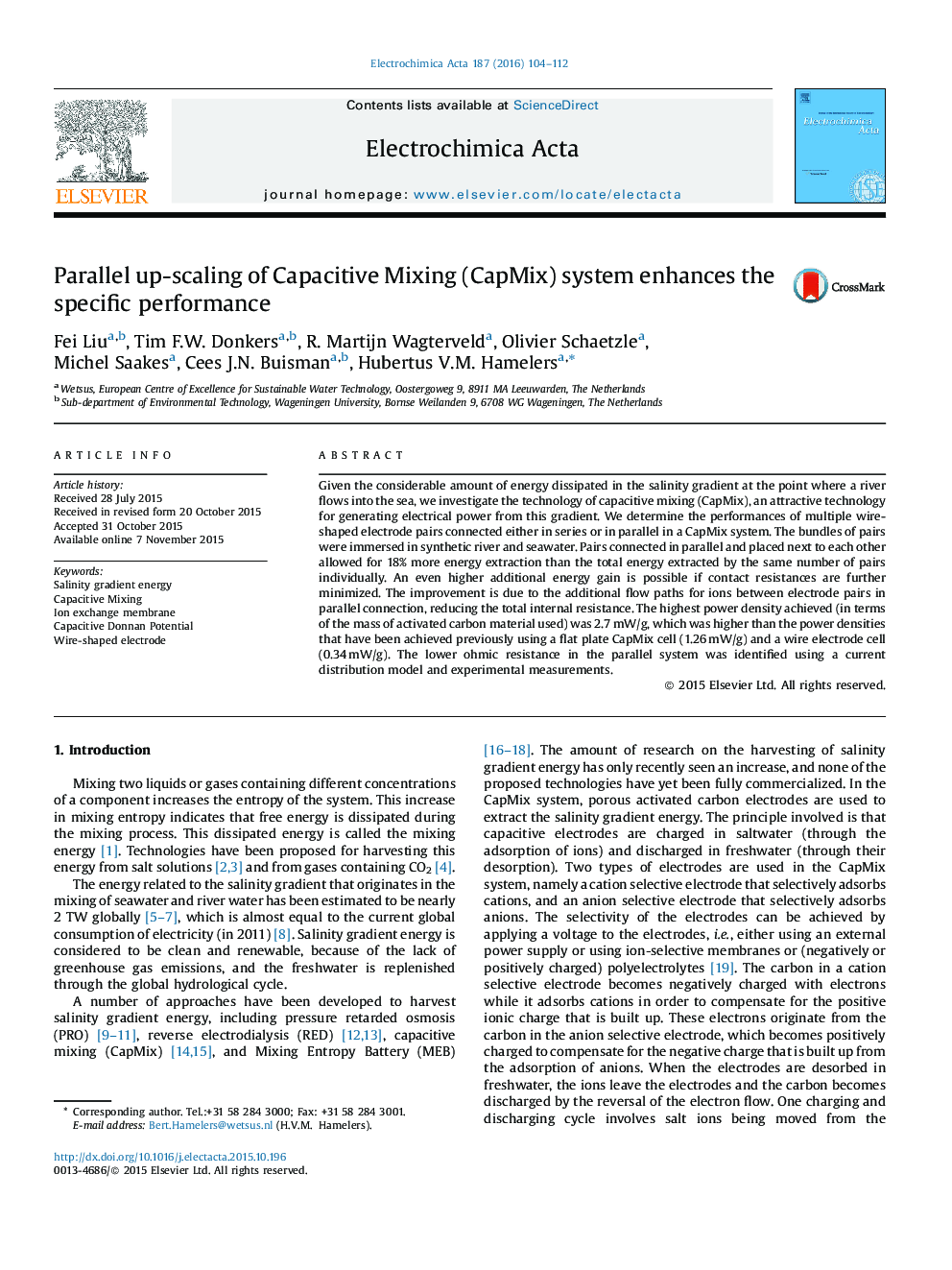| Article ID | Journal | Published Year | Pages | File Type |
|---|---|---|---|---|
| 183249 | Electrochimica Acta | 2016 | 9 Pages |
Given the considerable amount of energy dissipated in the salinity gradient at the point where a river flows into the sea, we investigate the technology of capacitive mixing (CapMix), an attractive technology for generating electrical power from this gradient. We determine the performances of multiple wire-shaped electrode pairs connected either in series or in parallel in a CapMix system. The bundles of pairs were immersed in synthetic river and seawater. Pairs connected in parallel and placed next to each other allowed for 18% more energy extraction than the total energy extracted by the same number of pairs individually. An even higher additional energy gain is possible if contact resistances are further minimized. The improvement is due to the additional flow paths for ions between electrode pairs in parallel connection, reducing the total internal resistance. The highest power density achieved (in terms of the mass of activated carbon material used) was 2.7 mW/g, which was higher than the power densities that have been achieved previously using a flat plate CapMix cell (1.26 mW/g) and a wire electrode cell (0.34 mW/g). The lower ohmic resistance in the parallel system was identified using a current distribution model and experimental measurements.
